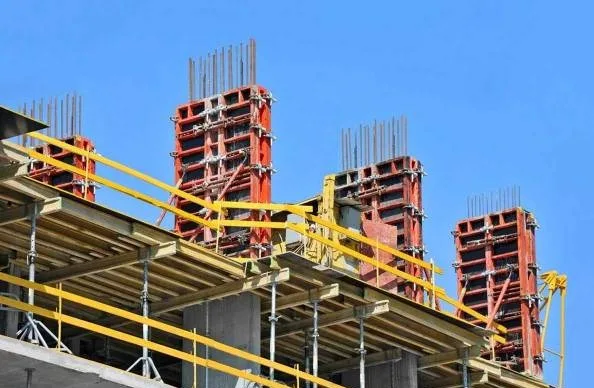When we think about construction, images of towering cranes, heavy machinery, and concrete may come to mind. But there’s an unsung hero in the construction world—scaffolding. It’s the network of platforms and tubes you see wrapped around buildings under construction, restoration, or demolition. While scaffolding might seem like a simple support system, it plays a crucial role in modern-day building projects, particularly when it comes to sustainability.
Let’s dive into how scaffolding is quietly contributing to greener, more sustainable construction practices.
1. Reusability: Scaffolding That Lasts
One of the key components of sustainability is the ability to reuse materials, and scaffolding fits perfectly into that narrative. In construction, scaffolding is rarely a “use-it-and-lose-it” product. Whether it’s made from steel or aluminum, scaffolding structures are built for durability, allowing them to be reused across multiple projects. This reusability reduces the demand for new raw materials, thus lowering the overall environmental impact.
For example, aluminum scaffolding, known for its lightweight yet sturdy properties, can last for decades if properly maintained. When a building project wraps up, the scaffolding is simply dismantled, stored, and then redeployed for the next job. This cycle of reuse means that a single set of scaffolding could support hundreds of different projects over its lifespan, significantly reducing the need for producing new materials every time a structure is erected.
2. Efficient Resource Use: Minimal Waste
Another pillar of sustainability is minimizing waste. Scaffolding systems are designed to be flexible and modular, meaning they can be adjusted to fit the specific needs of a project, whether it’s a small renovation or a massive skyscraper. Because of this adaptability, there’s minimal waste when erecting scaffolding—workers can customize the structure with precision, using only what’s necessary for the task at hand.
Compare this to traditional construction materials like timber, where leftover wood from framing or concrete from pouring often goes to waste. Scaffolding is much more efficient. There are no scraps left behind, and any unused parts are simply packed away for future use, keeping the entire process lean and waste-free.
3. Safety & Sustainability
Sustainability is not only about conserving materials but also ensuring the long-term safety and well-being of construction workers. In a world where accidents and injuries can slow down projects and lead to wasteful rework, scaffolding plays a vital role in protecting workers and ensuring a safe work environment.
Modern scaffolding systems are equipped with safety features like guardrails, slip-resistant surfaces, and secure platforms, minimizing the risk of accidents. This keeps projects running smoothly and reduces downtime caused by injuries or structural failures. When construction sites are safer, projects can progress faster and with fewer delays, which translates to reduced energy use, lower emissions, and fewer material losses.
A smooth, safe construction process is inherently more sustainable because fewer resources are wasted due to accidents, and the project can be completed on time and on budget.
4. Facilitating Green Building Techniques
Scaffolding also enables green building techniques, which are central to sustainable construction. Many of today’s most sustainable building methods require precision work, often at great heights. Think of installing solar panels on rooftops or constructing green walls, which are essentially vertical gardens designed to improve air quality and reduce heat. Without scaffolding, these eco-friendly installations would be impossible or extremely difficult to execute safely.
Take green roofing, for example. Installing plants, grasses, or solar panels on a roof can drastically reduce the energy footprint of a building. Scaffolding provides the safe access required to complete these installations, helping buildings become more energy-efficient and sustainable.
5. Lower Carbon Footprint with Modern Materials
The scaffolding industry has been evolving to align with global sustainability goals. Traditional scaffolding was often made from materials that were either heavy, prone to corrosion, or difficult to recycle. However, modern scaffolding materials like aluminum and steel alloys are not only lighter and more durable but also more sustainable.
Aluminum, for instance, has a much lower carbon footprint compared to other metals. It’s lightweight, which reduces the energy required to transport it to and from construction sites. Furthermore, aluminum is 100% recyclable without losing its properties, meaning that at the end of its lifecycle, it can be melted down and reused indefinitely without sacrificing quality. This aligns with the circular economy model, which is a core principle of sustainability.
6. Supporting Green Renovations
Sustainable construction isn’t just about new buildings; it’s also about retrofitting and renovating existing structures to make them more energy-efficient. Scaffolding is an essential part of these renovation projects. Whether workers are installing new energy-efficient windows, adding insulation, or restoring a building’s exterior to meet green standards, scaffolding provides the necessary support.
By enabling renovations that bring old buildings up to modern sustainability standards, scaffolding helps extend the life of these structures, avoiding the environmental cost of demolishing and rebuilding them from scratch.
7. Future-Proofing the Industry
As the world moves towards greener, more sustainable practices across all industries, the construction sector is no exception. Scaffolding companies are already stepping up, with many adopting eco-friendly production methods and sourcing sustainable materials. As innovation continues, we can expect even more advancements in scaffolding technology that will further reduce waste, energy consumption, and carbon emissions on construction sites.
While scaffolding might not be the first thing that comes to mind when you think about sustainable construction, it’s clear that this humble structure plays a key role. From reducing waste and promoting safety to facilitating the use of green building techniques, scaffolding is an essential tool for building a more sustainable future.
As the construction industry continues to evolve towards greener practices, scaffolding will remain an integral part of the solution—supporting not just the buildings of today but also the sustainable cities of tomorrow.

